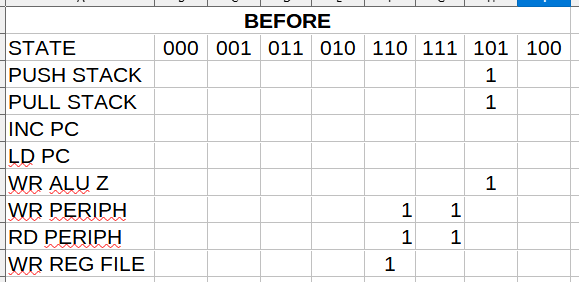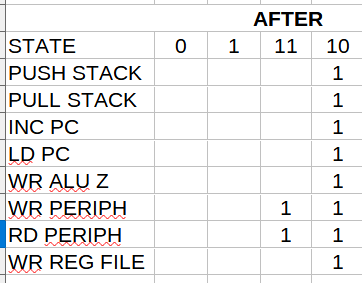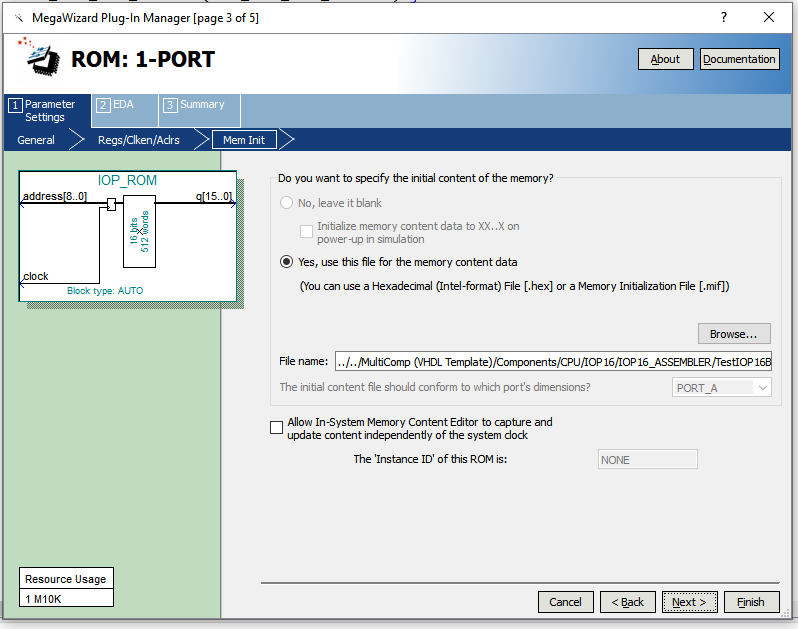-
I2C Front Panel Control
07/07/2021 at 20:22 • 0 commentsThere are several other IOP16 demos that use the Land Boards Front Panel I2C card. The Hackaday page for the Front Panel is here.
The code controls the four MCP23016 parts. These are 16-bit I2C parallel I/O expanders. The advantage using the Land Boards Front panel card is it only uses 2 FPGA I/O pins to read 32 pushbuttons and write 32 LEDs. The IOP16 runs the Front Panel I2C interface. The GitHub for the Front Panel example is here.
There are three examples so far.
- FrontPanel01 - Controls the second port of a Dual Port SRAM simulating control of a VHDL Retro Computer
- FrontPanel01B - Controls the second port of a Dual Port SRAM simulating control of a VHDL Retro Computer
- FrontPanel01_Test_LoopBack - Loopback toggle of pushbutton to LEDs.
There's also an example for Multicomp which controls an M6800 CPU running MIKBUG. This is a fully functional Front Panel example.
-
Blinkenlight Demo
07/07/2021 at 20:03 • 0 commentsNew Timer Unit
Added a timer unit to the IOP16. The timer unit allows a time value to be written to the Timer and the timer can be polled from the IOP16 to determine when the time has elapsed.
The timer unit can count in uSecs (0-255), mSecs (0-255) or Seconds (0-255). Writing the appropriate time value to the timer unit starts the timer running. The timer status register indicates when the count is in progress (d0 = 1). This facilitates simple polling.
Here's the IOP16 code to blink an LED off and every second:
000 START 0x7800 IOW #0x00 IO_00 WRITE TO LED 001 0x2001 LRI Reg0 0X01 TIME 1 SEC 002 0x7006 IOW Reg0 IO_06 STORE TO START TIMER 003 WAITDUN 0x6104 IOR Reg1 IO_04 READ TIMER 004 0x8101 ARI Reg1 0X01 CHECK BUSY 005 0xDFFE BNZ WAITDUN 006 0x7900 IOW #0x01 IO_00 WRITE TO LED 007 0x2001 LRI Reg0 0X01 TIME 1 SEC 008 0x7006 IOW Reg0 IO_06 STORE TO START TIMER 009 WAITD2 0x6104 IOR Reg1 IO_04 READ TIMER 00a 0x8101 ARI Reg1 0X01 CHECK BUSY 00b 0xDFFE BNZ WAITD2 00c 0xE000 JMP START
-
New GitHub repo
07/06/2021 at 01:09 • 0 comments -
Speeding Up the CPU
07/03/2021 at 21:17 • 0 commentsThe IOP16 runs at 8 of 50 MHz clocks per instruction. That is 6.25 MIPS which really is way more than fast enough for this use. The states are Grey Coded as follows:
Most of the cycles do nothing. There is no good reason this can't run twice as fast. The Grey Codes are:
Made the change and it worked. It now runs at 12.5 MIPS. Way overkill, but why not.
-
Simple Application Example
06/22/2021 at 21:42 • 0 commentsSimple code example where the IOP16B reads the pushbutton and writes to the LED on the FPGA card.
Sources
- Application VHDL code is here.
- IOP16B VHDL code is here.
- Assembly code is here.
- Some other VHDL pieces are in subdirectories from here.
Memory Map
Single peripheral address (0x00), data bit (D0).
Top Level Entity
entity TestIOP16B is port ( -- Clock and reset i_clk : in std_logic := '1'; -- Clock (50 MHz) i_n_reset : in std_logic := '1'; -- The key and LED on the FPGA card i_key1 : in std_logic := '1'; -- KEY1 on the FPGA card o_UsrLed : out std_logic := '1' -- USR LED on the FPGA card ); end TestIOP16B;CPU Instance
IOP16: ENTITY work.IOP16 -- Need to pass down instruction RAM and stack sizes generic map ( INST_SRAM_SIZE_PASS => 512, -- Small code size since program is "simple" STACK_DEPTH_PASS => 4 -- Single level subroutine (not nested) ) PORT map ( i_clk => i_clk, i_resetN => w_resetClean_n, -- Peripheral bus signals i_periphDataIn => w_periphIn, o_periphWr => w_periphWr, o_periphRd => w_periphRd, o_periphDataOut => w_periphOut, o_periphAdr => w_periphAdr );Code
List file is:
000 SELF 0x6000 IOR 0x00 IO_00 read pushbutton 001 0x7000 IOW 0x00 IO_00 write LED 002 0xE000 JMP SELF
IOP_ROM
The ROM file name has to be IOP_ROM and it gets stored in the current project folder. That allows for the IOP16B to be used in other projects. The Assembler creates a MIF file which gas to be loaded:
IOP_ROM
The IOP_ROM instance has two parameters: INST_SRAM_SIZE_PASS and STACK_DEPTH_PASS.
-- Set stack size in STACK_DEPTH generic IOP16: ENTITY work.IOP16 -- Need to pass down instruction RAM and stack sizes generic map { INST_SRAM_SIZE_PASS => 512, -- Small code size since program is "simple" STACK_DEPTH_PASS => 1 -- Single level subroutine (not nested) )INST_SRAM_SIZE_PASS has to match the size of the IOP_ROM.
STACK_DEPTH_PASS can be 0, 1, or > 1 (typically 4 for 16) deep stack,
Application Example Logic
-- Peripheral bus read mux w_periphIn <= "0000000"&i_key1 when (w_periphAdr=x"00") else x"00"; -- Strobes/Selects w_wrLED <= '1' when ((w_periphAdr=x"00") and (w_periphWr = '1')) else '0'; latchLED: PROCESS (i_clk) BEGIN IF rising_edge(i_clk) THEN if w_wrLED = '1' then o_UsrLed <= w_periphOut(0); END IF; END IF; END PROCESS;
 land-boards.com
land-boards.com

